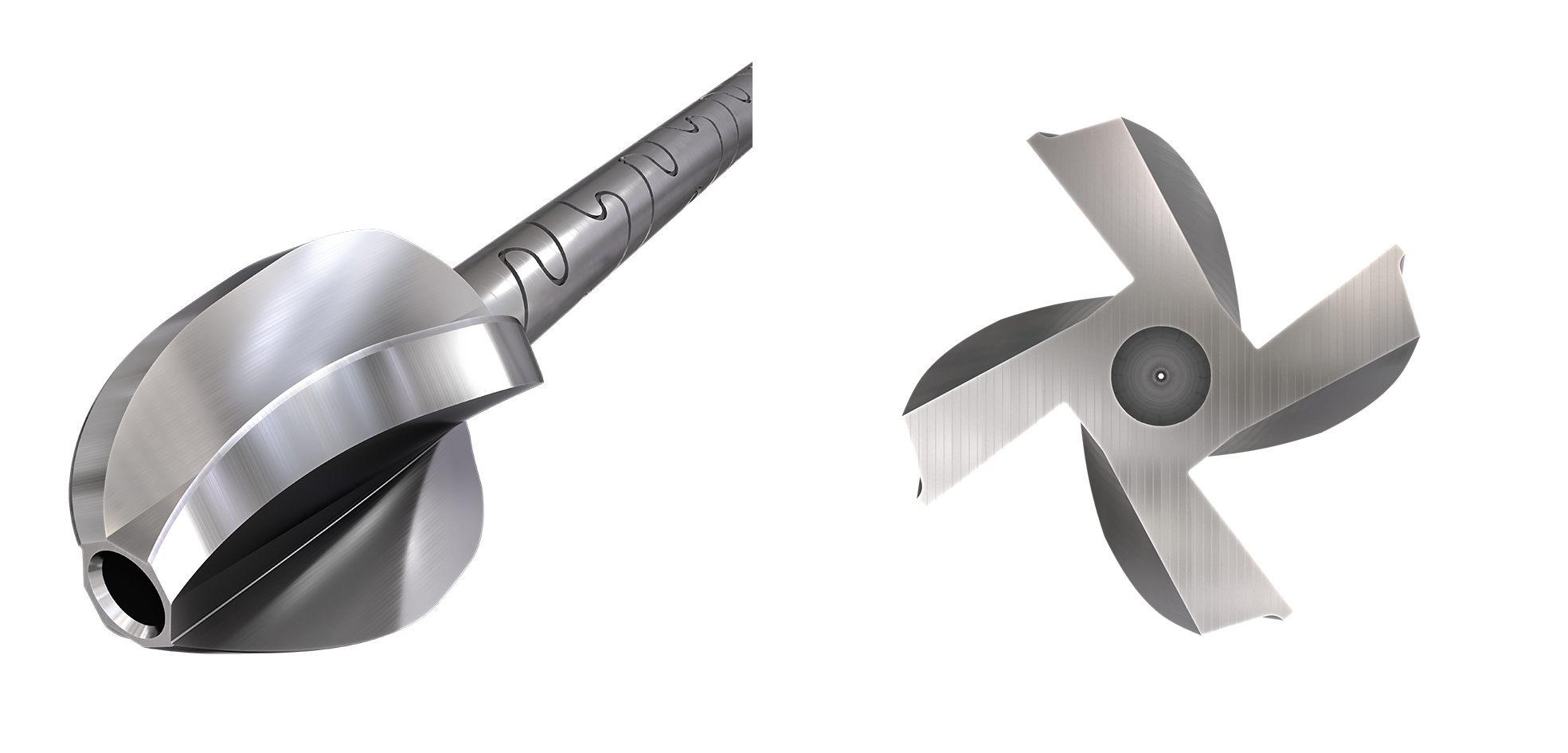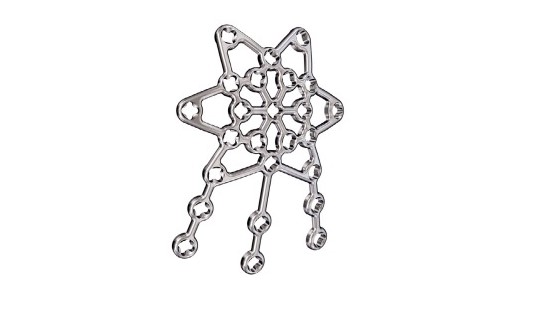
Flexible Monobloc Reamers
Abstract
In response to various clinical demands (cutting performance, usability), new Flexible Monobloc Reamers have been developed to ream an intramedullary bone canal in preparation for insertion of implants.
The new monobloc reamers are provided in reamer diameters from 8 mm to 18 mm in 0.5 mm increments and in reamer lengths of 480 and 620 mm (Fig 1). Each reamer has a one-piece design with a flexible shaft. Compared with modular reamers there is no need for intraoperative reamer head exchange. All reamers have a hybrid reamer head design that incorporates both front- and side-cutting features. The deeply fluted reamer heads function to reduce intramedullary pressure and increase the flow of bone chips and marrow. A wear indicator in the Graphic Case allows surgeons to understand the extent of the reamer deterioration.
With the new Flexible Monobloc Reamers, surgeons can choose simplicity and enhanced usability for the reaming procedure that has the potential to be challenging and time consuming when using modular reamer system.
Fig 1 Acorn shape reamer head with deep-cutting flutes and flexible reamer shaft.
You might also be interested in
MAXFRAME Update
The MAXFRAME System has now been updated with a new Software release and additional Hardware.
The new Variable Angle LCP Periprosthetic Proximal Femur Plating System
Developed to address various aspects in periprosthetic femoral fracture treatment.
VA-LCP Distal Fibula Plates in titanium
Line extension enhancing the VA-LCP Ankle Trauma 2.7/3.5 System and introduction of an anatomic tray for the USF System.
The new Variable Angle Locking Patella Plating System
The Variable Angle Locking Patella Plating System was developed to reduce complication rates.
Disclaimer:
Hazards and labeling
Due to varying countries’ legal and regulatory approval requirements, consult the appropriate local product labeling for approved intended use of the products described on this website. All devices on this website are approved by the AO Technical Commission. For logistical reasons, these devices may not be available in all countries worldwide at the date of publication.
Legal restrictions
This work was produced by AO Foundation, Switzerland. All rights reserved by AO Foundation. This publication, including all parts thereof, is legally protected by copyright.
Any use, exploitation or commercialization outside the narrow limits set forth by copyright legislation and the restrictions on use laid out below, without the publisher‘s consent, is illegal and liable to prosecution. This applies in particular to photostat reproduction, copying, scanning or duplication of any kind, translation, preparation of microfilms, electronic data processing, and storage such as making this publication available on Intranet or Internet.
Some of the products, names, instruments, treatments, logos, designs, etc referred to in this publication are also protected by patents, trademarks or by other intellectual property protection laws (eg, “AO” and the AO logo are subject to trademark applications/registrations) even though specific reference to this fact is not always made in the text. Therefore, the appearance of a name, instrument, etc without designation as proprietary is not to be construed as a representation by the publisher that it is in the public domain.
Restrictions on use: The rightful owner of an authorized copy of this work may use it for educational and research purposes only. Single images or illustrations may be copied for research or educational purposes only. The images or illustrations may not be altered in any way and need to carry the following statement of origin “Copyright by AO Foundation, Switzerland”.
Check www.aofoundation.org/disclaimer for more information.
If you have any comments or questions on the articles or the new devices, please do not hesitate to contact us.
The brands and labels "approved by AO Technical Commission" and "approved by AO Foundation", particularly "AO" and the AO logo, are AO Foundation's intellectual property and subject to trademark applications and registrations, respectively. The use of these brands and labels is regulated by licensing agreements between AO Foundation and the producers of innovation products obliged to use such labels to declare the products as AO Technical Commission or AO Foundation approved solutions. Any unauthorized or inadequate use of these trademarks may be subject to legal action.







